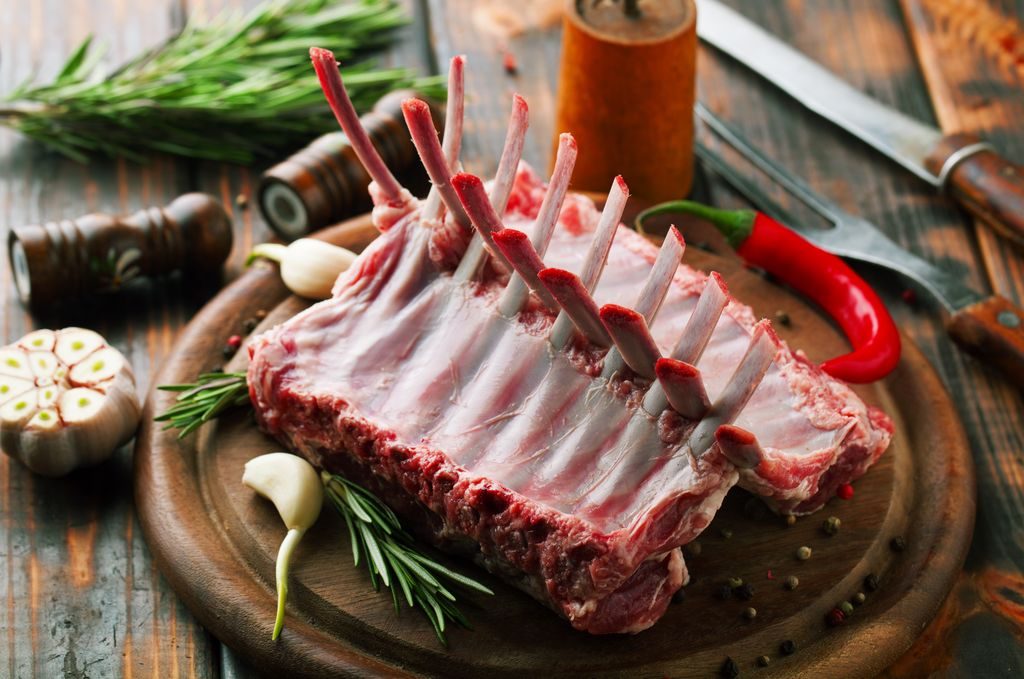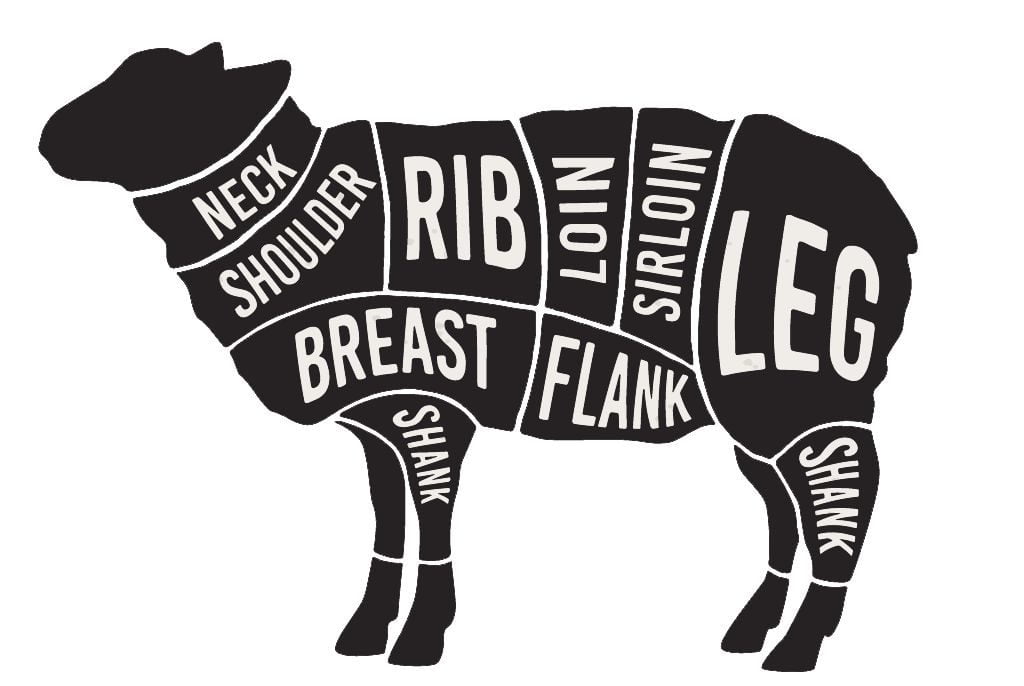Lamb
Lamb can be used in burgers, meatballs, stews, stir-fries, kebabs, curry and many other dishes!

Lamb, hogget, and mutton are all names for the same animal at different stages in its life. Sheep under 1-year-old is called lamb, hogget is between 1 and 2 and mutton 2 years and up. Lamb is by far the most popular of the three, its the most tender, however, it tends to have the least flavour!
It can be used in burgers, meatballs, stews, stir-fries, kebabs, curry and many other dishes. It is sold both raw and cooked. Raw it comes, cubed, minced, steaks or in joints of various sizes.
It’s also best whenever possible to buy free-range and organic lamb as it means the animal has had a good quality of life.
Lamb is a really versatile, and more often than not all the animal is used.
Lamb cuts

When a lamb is butchered it is divided into cuts. Different countries and cultures make these cuts in different ways, in the UK the primal cuts are Neck, Shoulder, Best of The Neck, Loin, Chump, Leg, Shank and Breast.
As with all meat, each cut of lamb has different qualities and are suited for different things. This guide is here to help you choose the correct cut for your cooking!
Neck
Meat from this section tends to be a bit tough but flavorful! It’s great for stews and other slow-cooked dishes. It is also cut into fillets and deboned. Meat from this section is usually quite cheap!
Shoulder
This is one of the most hard-working sections of the animal so shoulder cuts tend to be quite tough. It becomes really tender when slow-cooked making it perfect for roasting, and stewing. It can be sold whole, in half, boned and rolled into a joint, cubed and minced for dishes like moussaka.
Best Of The Neck
This section is also known as the ‘best end’ or the ‘rack of lamb’ and is located behind the shoulder. It tends to be the most tender cut of the animal. Lambs tend to have between 8 and 9 ribs, these are usually cut and sold as a ‘rack of lamb’. Lamb cutlets are also taken from this section.
Loin
The loin can be sold whole or cut into chops. It is a very tender part of the animal so it is not suited to slow cooking. The chops are great pan-fried or grilled while lion joints can be roasted
Chump
The chump is located next to the leg on the lower back. It tends to be a more economical cut of lamb and is commonly sold diced, cut into steaks or ground into mince. You can also get you can get chops, steak or it can be boned and rolled into a joint.
Leg
The leg is a classic roasting cut, its similar to the leg but not as tough it can be slow-cooked but make sure not to overcook it! Its also got a really good flavour and a low fat content. The leg can be sold whole, in half, boned and rolled into a joint, cubed and minced.
Shank
Lamb shanks are located on the end of the leg above the hoof. Its a touch part of the animal and it needs to be cooked long and slowly. Done correctly the meat will become incredibly tender and delicious! It’s also very economical!
Breast
The lamb’s breast is located in the belly of the animal, so it tends to be quite fatty. The breast is usually rolled and sold as a joint which is great slow roasted. The breast also tends to be one of the cheapest cuts of the lamb.
Recipe suggestion: mousaka
Nutritional information of Lamb
Lamb is categorised as red meat – along with beef, pork and veal – a term used for the meat with high levels of iron.
Not all lamb cuts are the same but in general, lamb is high in high-quality protein and contains varying amounts of fat. The fat content mainly depends on the diet of the animal, age, gender and how it was butchered. Protein helps your body maintain muscle mass, grow and support itself.
The fat in lamb is mostly saturated fats but it also contains a small level of conjugated linolic acid which help your body.
Lamb has good amounts of Vitamin B12, Zinc, and Iron, Selenium, Zinc, Niacin and Phosphorus.




